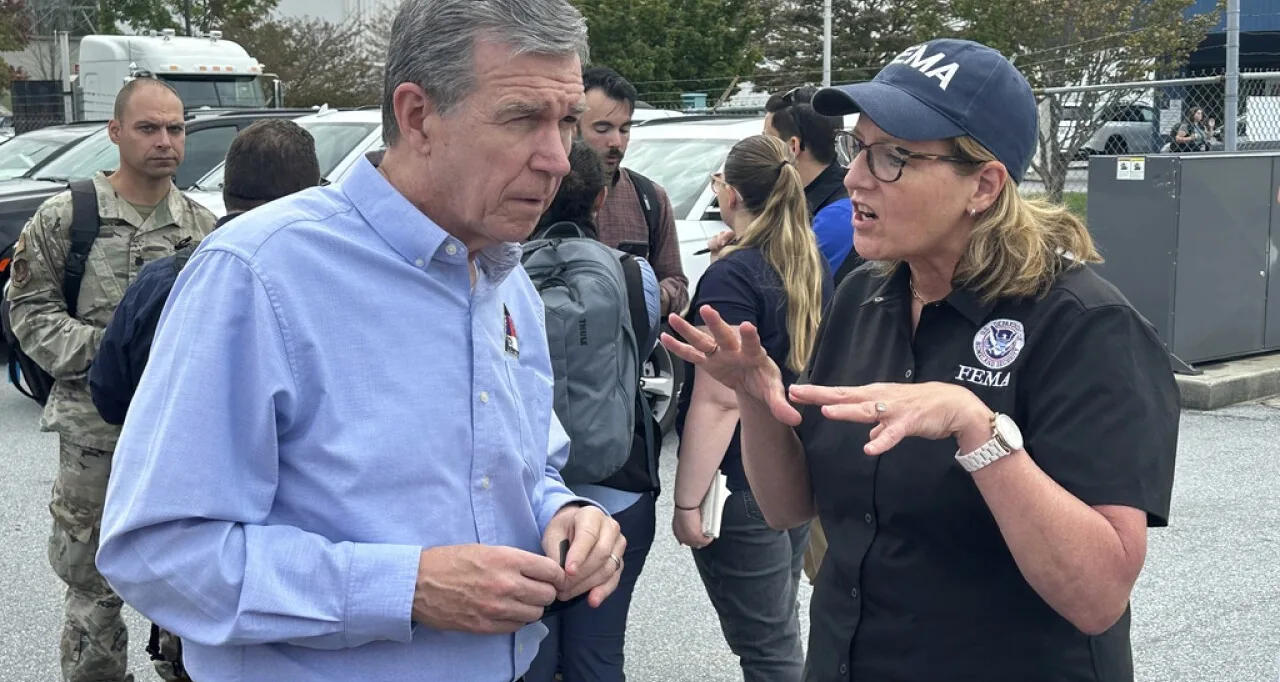Project 2025 and FEMA: Proposed Changes, Impact on Disaster Recovery
On October 1, 2024, following the devastation caused by Hurricane Helene, misinformation about FEMA’s future circulated online. Claims surfaced that Project 2025, a policy initiative by the Heritage Foundation, would eliminate FEMA. These claims quickly gained traction on social media, prompting questions about the program’s intent.
What Is Project 2025?
Project 2025 is an initiative launched by the conservative think tank The Heritage Foundation. Its core purpose is to provide a detailed framework for reshaping the federal government under a conservative administration. The plan, titled “Mandate for Leadership: The Conservative Promise,” is a comprehensive 922-page document that outlines numerous reforms for various government agencies, including FEMA.
Does Project 2025 Recommend Eliminating FEMA?
No, Project 2025 does not recommend eliminating FEMA. However, it does propose significant changes to the agency’s funding structure and disaster response protocols. The document suggests that FEMA should shift more of the financial responsibility for disaster recovery onto state and local governments, while the federal government would take on a smaller role, especially in smaller disasters.
Key Proposed Changes to FEMA Under Project 2025
- Cost-Sharing Adjustments:
Under current FEMA protocols, the federal government typically covers 75% of disaster recovery costs, with state and local governments responsible for 25%. In cases of catastrophic events, the federal share can increase to 100%.
Project 2025 proposes changing this structure. For smaller disasters, the federal government would only cover 25%, while for major disasters, the federal share would remain at a maximum of 75%. This shift would place a larger financial burden on state and local governments. - Eliminating Preparedness Grants:
Project 2025 suggests cutting federal preparedness grants for states, local governments, and special-interest groups. These grants are currently provided by FEMA to help communities prepare for future disasters. The proposal argues that the removal of these grants would incentivize state and local governments to take more proactive steps in disaster preparedness. - National Flood Insurance Program:
The plan recommends replacing FEMA’s National Flood Insurance Program (NFIP) with private insurance options. The NFIP provides flood insurance to property owners in flood-prone areas. Project 2025 advocates for transitioning this program to the private sector, with the goal of reducing federal involvement in insurance. - Raising the Per-Capita Threshold:
Currently, FEMA uses a per-capita threshold to determine whether a disaster qualifies for federal aid. This threshold is based on the population and the damage incurred. Project 2025 proposes raising this threshold to align with inflation, making it more difficult for smaller disasters to qualify for federal assistance. Critics argue that this change could delay or reduce aid for communities in need.
Rationale Behind These Changes
The Heritage Foundation argues that the proposed changes would encourage state and local governments to take more responsibility for disaster management. According to Ken Cuccinelli, a former Department of Homeland Security (DHS) official and contributor to the Project 2025 report, FEMA should not be distributing “billions of federal tax dollars” for local needs. Instead, the report advocates for local governments to play a larger role in both preparing for and recovering from disasters.
The rationale is that a reduced federal role would spur states to invest more in their own disaster preparedness, leading to stronger and more resilient local responses. Proponents of the plan also believe it would reduce the federal deficit by cutting back on federal disaster aid.
Concerns and Criticisms
Critics of Project 2025 argue that the proposed changes would disproportionately hurt communities that rely on federal aid to recover from disasters. The progressive advocacy group Center for American Progress (CAP) has expressed concerns that increasing the financial burden on states could leave many families and businesses vulnerable in the wake of disasters.
The proposed cutbacks in FEMA funding would likely hit rural and low-income areas the hardest, where local governments often lack the resources to cover the additional costs of recovery. The report’s suggestion to eliminate preparedness grants has also drawn criticism, as these grants play a vital role in helping communities develop plans, resources, and training for future disasters.
Additionally, raising the per-capita threshold would make it more difficult for small disasters to receive federal support. According to critics, this could slow recovery efforts and leave communities without the assistance they need after significant events like hurricanes, wildfires, or floods.
The Impact of Project 2025 on Disaster Recovery
If implemented, the proposed changes could lead to significant shifts in how the U.S. handles disaster recovery:
- Slower Disaster Responses: With a higher per-capita threshold and a greater burden on state and local governments, recovery efforts could slow down, especially for smaller-scale disasters.
- State Budget Strain: States would need to allocate more funds to disaster recovery, potentially straining state budgets. In the event of major disasters, some states may find themselves unable to meet the financial demands of recovery.
- Private Insurance Role: By pushing for the National Flood Insurance Program (NFIP) to be replaced by private insurance, the federal government would reduce its direct involvement in flood insurance. This could lead to higher premiums for homeowners in flood-prone areas and decreased accessibility to affordable insurance coverage.
FEMA’s Role and Response
Despite the proposed changes, FEMA remains critical to the country’s disaster management strategy. In the aftermath of hurricanes like Helene, which affected six states and caused over 100 deaths, FEMA has been instrumental in providing emergency relief, coordinating with federal agencies, and distributing funds for recovery. The organization has continued to play a vital role in assisting states as they rebuild homes, infrastructure, and communities.
What Happens Next?
It is important to note that Project 2025 is a policy proposal and not yet implemented. Whether these changes to FEMA will be enacted depends on future legislation and the priorities of future administrations. If these reforms are adopted, they would likely take several years to fully come into effect, with states and local governments needing time to adjust to the new responsibilities.
Conclusion
Project 2025 does not propose eliminating FEMA, but it does recommend substantial changes to how the agency operates. By shifting more financial responsibility to state and local governments, the proposal aims to reduce federal spending and encourage proactive disaster management at the local level. However, critics argue that these changes could make it more difficult for communities to recover from disasters, particularly for smaller disasters that might no longer qualify for federal aid.
As discussions surrounding Project 2025 continue, it is essential for policymakers to carefully consider the potential impact on disaster recovery and ensure that communities have the resources they need to recover and rebuild after major events.
FAQs
Does Project 2025 propose eliminating FEMA?
No, Project 2025 does not suggest eliminating FEMA but proposes reducing federal involvement in disaster recovery and shifting more financial responsibility to states.
What changes are proposed for FEMA in Project 2025?
The proposed changes include adjusting the federal cost-sharing structure, eliminating preparedness grants, replacing the National Flood Insurance Program with private insurance, and raising the per-capita threshold for disaster declarations.
How would Project 2025 impact disaster recovery efforts?
The changes could slow recovery efforts, especially for smaller disasters, by placing a greater financial burden on state and local governments.
Who supports Project 2025’s FEMA reforms?
Proponents argue that the reforms would reduce federal spending and encourage states to take a more proactive role in disaster management.
What criticisms have been raised against Project 2025?
Critics argue that the changes could disproportionately affect low-income and rural communities, making it harder for them to recover from disasters.







